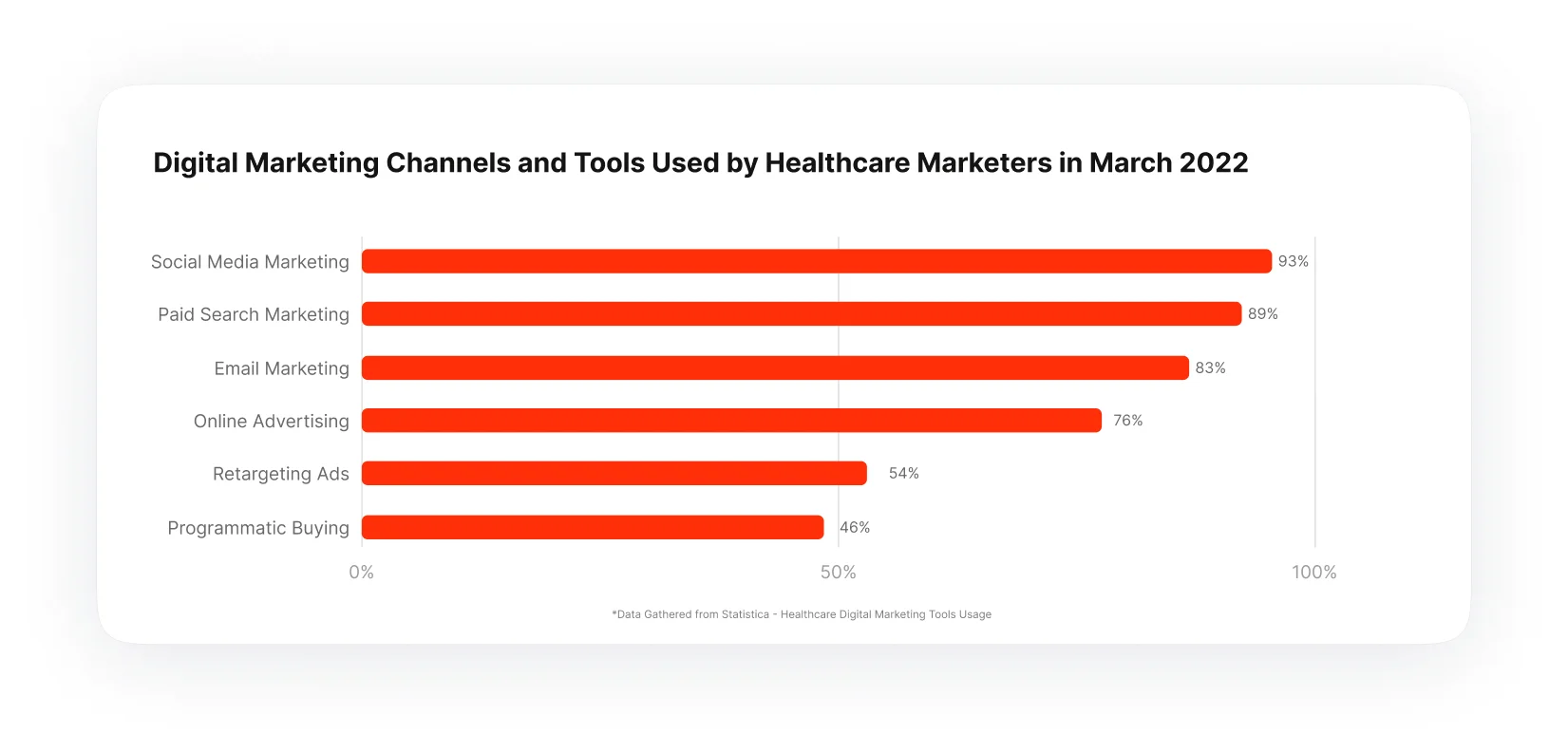
Demographic targeting in healthcare advertising is a powerful method for effectively reaching your target audience and driving conversions. By tailoring marketing efforts to specific demographic segments, healthcare organizations can create meaningful connections with potential patients and improve campaign effectiveness. This blog explores the fundamentals of demographic targeting, audience identification, and crafting impactful healthcare advertising campaigns based on demographic data.
Demographic targeting involves segmenting audiences based on factors such as age, gender, location, income, and ethnicity, enabling personalized messaging and solutions. The following sections will discuss key demographic factors, tailored messaging, advertising platforms, legal and ethical guidelines, and campaign success measurement. Don’t forget to check out our blog on Targeting and Audience Segmentation for a comprehensive understanding of targeting strategies.
Join us as we unlock the potential of demographic targeting in your healthcare advertising strategy!
Demographic targeting is a marketing strategy that involves segmenting audiences based on specific characteristics such as age, gender, location, income, education, occupation, marital status, and ethnicity. By identifying these demographic factors, marketers can create personalized messages and campaigns that resonate with their target audience, ultimately leading to higher engagement and conversions.
Demographic targeting offers several benefits that can enhance your healthcare advertising campaigns. Personalized messaging is a major advantage, as it allows you to create tailored messages that resonate with your audience, leading to increased engagement and conversions. Additionally, demographic targeting can result in more efficient resource allocation, enabling you to focus your marketing resources on specific demographic segments for a higher return on investment (ROI).
By addressing the unique needs and preferences of your target audience, demographic targeting also contributes to an improved customer experience. Furthermore, it can provide you with a competitive advantage by offering tailored healthcare solutions that appeal to specific audience segments, allowing you to stand out from competitors.
By understanding the fundamentals of demographic targeting, you can refine your healthcare advertising campaigns to better reach and engage your target audience.
Before diving into demographic targeting, it’s crucial to have a clear understanding of your healthcare product or service. This includes the key features, benefits, and unique selling points that set you apart from the competition. By knowing your product or service inside out, you’ll be better equipped to identify the most relevant demographic segments to target.

Market segmentation is the process of dividing your target audience into smaller, more specific groups based on shared characteristics. In healthcare advertising, common segmentation approaches include:
To effectively target your chosen demographic segments, it’s helpful to create detailed personas that represent the characteristics, needs, and preferences of each group. Personas should include age, gender, occupation, income, health concerns, and lifestyle habits. By developing these personas, you can better understand your audience and tailor your messaging, marketing channels, and campaign strategies accordingly.
Understanding your competition is essential for effective demographic targeting. Research competitors’ healthcare products and services, their target audience, and the advertising channels they use. This information can help you identify gaps in the market, differentiate your offering, and make informed decisions about which demographic segments to target.
Once you have identified your target audience and segmented them based on demographic factors, it’s essential to align your advertising campaigns with the insights you’ve gathered. This means tailoring your messaging, visuals, and calls to action to address the specific needs, preferences, and concerns of each demographic segment.
Selecting the appropriate marketing channels is crucial for reaching your target audience. Consider the following factors when choosing Platforms and Channels:

According to a 2022 survey conducted by Statistica in the United States, social media marketing was the most popular digital marketing channel among healthcare marketers, with 93 percent of respondents using it to engage with their target audience and promote their services. Paid search marketing and email marketing followed closely behind, with 89 percent and 83 percent of healthcare marketers utilizing these channels, respectively.
This data reinforces the importance of digital marketing in the healthcare industry and highlights the need for healthcare marketers to continue adapting to changing trends and preferences in order to effectively reach and engage with their audience.
To create compelling ad creatives that resonate with your target audience, focus on using clear and concise messaging to communicate the benefits of your healthcare product or service in simple, easy-to-understand language. Incorporate strong visuals, such as high-quality images, graphics, or videos, that capture attention and reinforce your message. Additionally, include a clear call-to-action that encourages your audience to take a specific action, such as booking an appointment, signing up for a newsletter, or contacting your healthcare facility.
Continuous testing and optimization are essential for maximizing the effectiveness of your healthcare advertising campaigns. Implement the following practices:
Demographic targeting in healthcare advertising is a powerful tool that enables medical practices and healthcare organizations to reach and engage with their target audience more effectively. By understanding your product or service, identifying your target audience, crafting compelling ad creatives, and continuously testing and optimizing your campaigns, you can drive better outcomes for your healthcare advertising efforts.
As a healthcare marketing agency, Webserv is uniquely positioned to support your advertising objectives with a blend of industry-specific knowledge and marketing expertise. Our team of dedicated healthcare marketing specialists is ready to help you unlock the full potential of demographic targeting for your brand. To learn more about our comprehensive healthcare advertising services, visit our dedicated page on the topic. If you’re ready to discuss how Webserv can elevate your healthcare advertising and achieve new heights in your business growth, book a meeting with our experts today.
Healthcare Demographic Targeting segments audiences based on specific demographics, helping healthcare companies improve campaign effectiveness and attract more patients.
HIPAA governs patient health information use and protection, while the Federal Trade Commission Act prohibits deceptive or unfair marketing practices.
By segmenting audiences based on demographics, healthcare organizations can gain a deeper understanding of their target audience’s needs, preferences, and decision-making processes.
Strategies include market segmentation, creating personas for each demographic segment, analyzing the competition, crafting effective healthcare advertising campaigns, and continuous testing and optimization of campaigns.
Best practices include obtaining patient consent, de-identifying patient information, avoiding sharing patient information with third-party marketers, and ensuring compliance with healthcare regulations.
